Web-based Augmented Reality (WebAR) storytelling techniques encompass defining your goal, audience and the story format, designing relatable characters and immersive settings, employing visual and audio cues, promoting user participation, and periodic testing and refining of AR content. Mastery of these techniques enables creation of engaging AR narratives.

Readers will gain a comprehensive understanding of practical AR technology applications, and challenges associated with WebAR, equipped with strategies to create captivating AR-enhanced narratives on their platforms.
Structuring Your Web AR Story
Diving headfirst into the world of web-based augmented reality (AR) storytelling requires a systematic approach. Like composing a book or directing a film, the base of your AR narrative demands a clear definition of your goal, understanding of your audience, and choice of a suitable story format. Let us delve deeper into these prerequisites, to lay a strong foundation for your AR storytelling journey.

Defining the Goal and Identifying the Audience
Your AR story is likely to have minimal impact if it doesn’t aim towards a well-defined goal or target a specific audience. Knowing what you want to achieve with your AR content and understanding your user’s expectations and needs is the step one in this roadmap. This understanding is reflected in how you utilize your chosen AR techniques and formulate your narrative, ultimately leading to more relevant, impactful, and engaging experiences.
| Goals | Audience |
| Informative | Students |
| Promotional | Customers |
| Entertainment | General public |
Selecting the Appropriate Narrative Structure
Setting your goals and identifying your audience is half the battle. The other half is choosing an apt narrative structure for your AR story. The choice of structure can significantly enhance the storytelling experience and plays a crucial role in putting across your message effectively.
Types of Structures and Their Impact on the Storytelling Experience
The structures commonly used in AR storytelling can be linear, nonlinear, branching, or modular. Each lends a different flavor to your AR narrative.
- Linear storytelling: This is a chronological structure; simple and straightforward. It suits scenarios where you want to depict a process or tell an unchanging story.
- Non-linear storytelling: This type allows you to break free from the norm and present the story in a fragmented manner. You may choose to reveal the climax at the beginning or switch between timelines.
- Branching structure: Here, the user’s actions dictate the course of the story. This creates interactive, personalized storytelling experiences, ideal for applications like role-playing games (RPGs).
- Modular structure: Unlike other structures, modular storytelling does not fix the sequence. Individual chunks of the story are designed independently and can be arranged in any order.
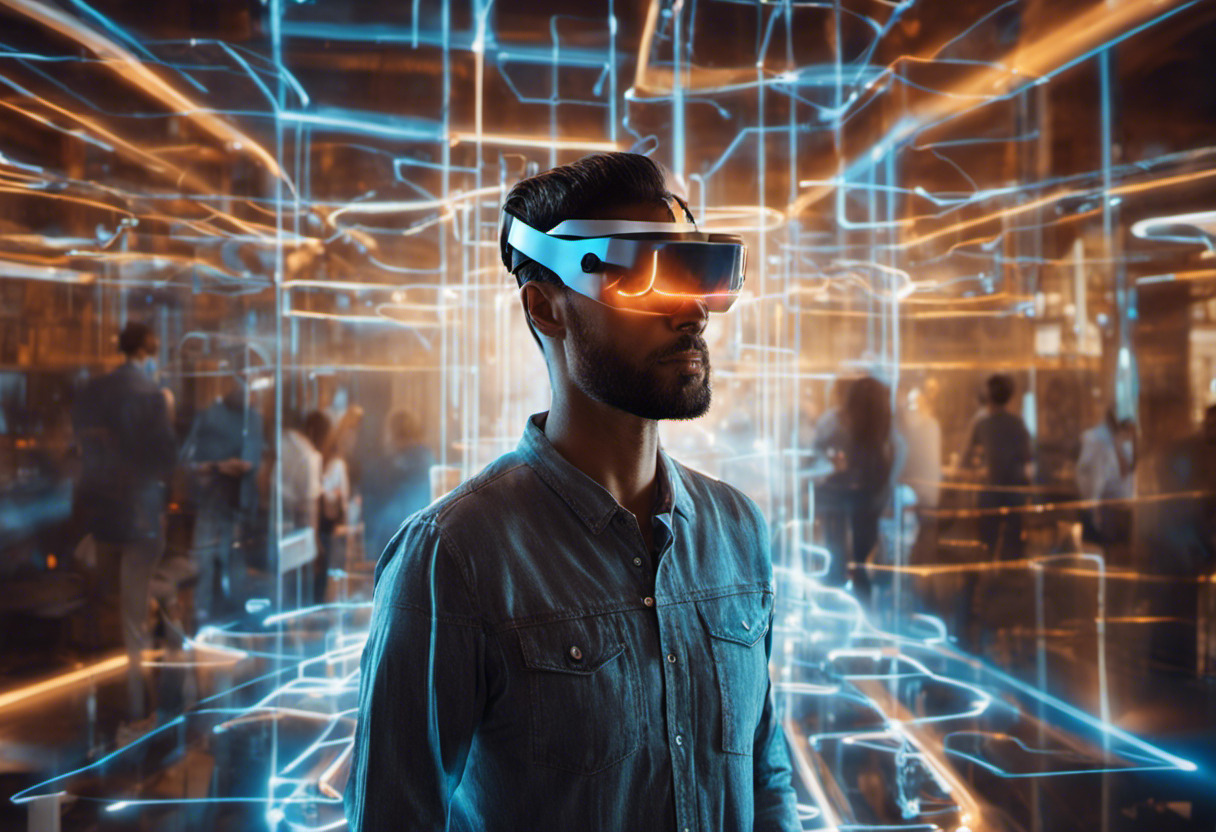
On the journey to creating captivating AR stories, understanding what framework suits your narrative is invaluable. Armed with a clear goal, an idea of your audience’s preferences, and the right structure, you can forge unforgettable virtual experiences.
Here’s an interesting read on the advantages of Web AR over traditional apps, that could help you elevate your AR storytelling endeavors.
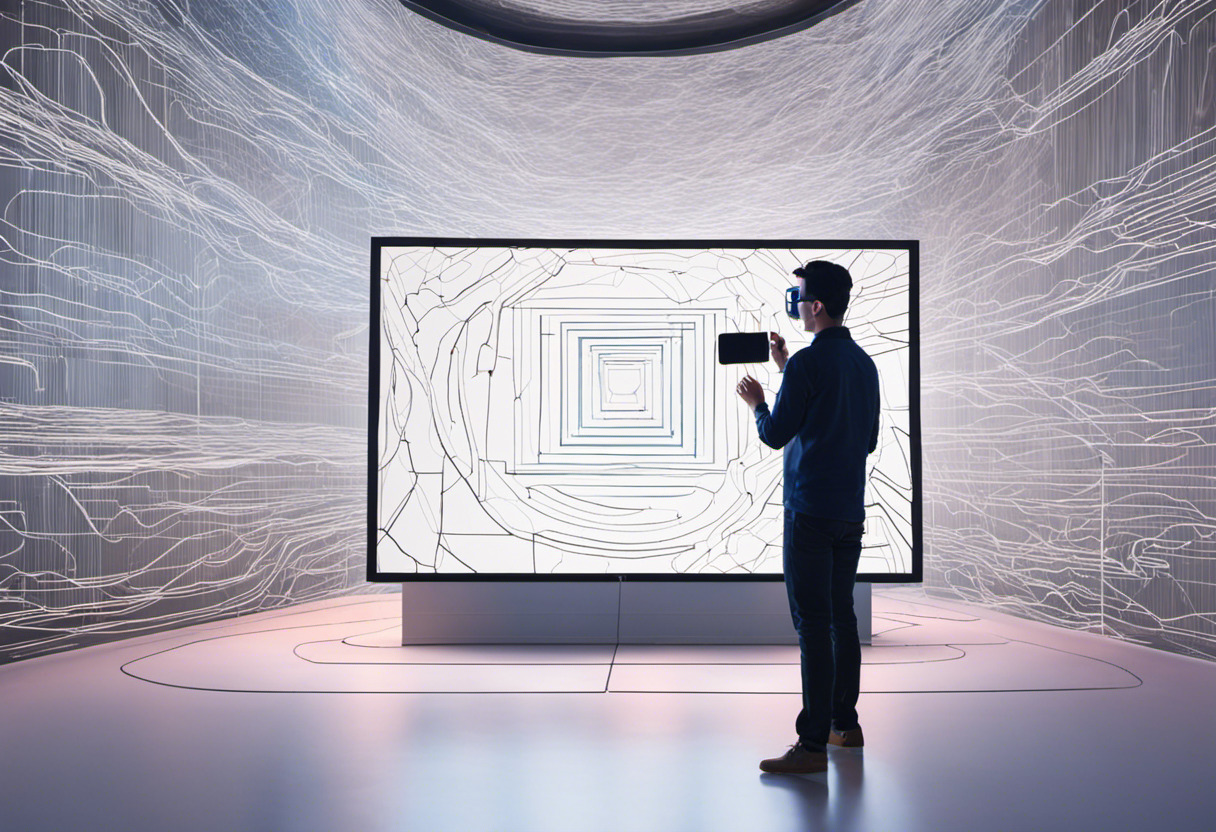
Crafting Characters and Settings for Web AR
Captivating and relatable characters, coupled with immersive settings, are pivotal to make AR content compelling and engaging to your audience. Web-based Augmented Reality offers a plethora of possibilities when it comes to character and environment design, which can significantly enhance the user engagement and overall narrative experience.
Designing Lifelike and Relatable Characters
Character creation is a crucial element of storytelling as they serve as the link between the audience and the world of AR. Well-crafted characters evoke emotions and allows users to form relationships with these virtual entities, which ultimately leads to a more immersive and enduring experience.
An excellent way to ensure character relatability is to understand your target audience’s needs and expectations, as well as their cultural and social backgrounds. This understanding can help you develop meaningful and impactful characters that resonate with your users.

AR Technology and Character Influence
Web AR technology plays an instrumental role in enhancing the presence and influence of characters within the story. The use of AR interfaces allows for character behaviors and interactions that were previously impossible. This could range from characters recognising and responding to user actions to characters evolving their personality traits based on user feedback or changing story conditions.
Moreover, AR characters can break the fourth wall and interact with the real world environment of the users, creating a more profound connection and giving the narrative a personal touch. This is particularly useful in creating suspension of disbelief, a key aspect of any immersive storytelling experience.

Creating Immersive Settings Using AR
In addition to creating engaging characters, the environment or the setting where the story unfolds is a crucial part of the storytelling process. With AR, the lines between reality and virtuality blur, adding a layer of immersion that is seldom achievable through traditional mediums.
AR technology can turn everyday spaces into novel environments and can spatially present information and events that transpire within the story. This helps in driving the narrative forward and deeply engaging the audience.
- Outdoor Locations: The real world can create the backdrop for your AR story. This can create a strong sense of immersion if the AR content is geolocated and interacts with real-world landmarks.
- Indoor Locations: Indoor spaces can be transformed through AR with the introduction of novel elements or hidden layers that become revealed through the AR interface. This can create a feeling of exploration and discovery, further engaging the users.
- Imaginary Settings: AR can create nonexistent spaces that exist only within the narrative, such as fantasy worlds or future landscapes. These environments can present unique opportunities for interaction and exploration.

AR can give life to your narrative like never before. As highlighted in this in-depth article on web AR UI/UX principles, deploying the right strategies can make your AR setting more than a backdrop—it becomes an integral part of the story itself.
Employing Visual and Audio Cues in AR Narratives
Visual and audio cues play an undeniable role in shaping immersive augmented reality experiences. These elements set the pace, initiate user reactions, and craft an overall emotional environment that draws users deeper into the narrative.
The Role of Visual and Audio Cues in Establishing Story Elements
Visual and audio cues establish story elements by creating a sense of place and time. They provide a context, allowing users to have a structured and meaningful experience. An impactful soundscape coupled with interactive visuals offer a multi-sensory approach that boosts the story’s spectrum, making it more relatable and engaging.
Visual Cues in AR
Visual cues in AR include items such as digital imagery, animations, text or graphic overlays and 3D objects. An expertly implemented visual programming can evoke stronger emotional connections and provide a clearer flow to the story.
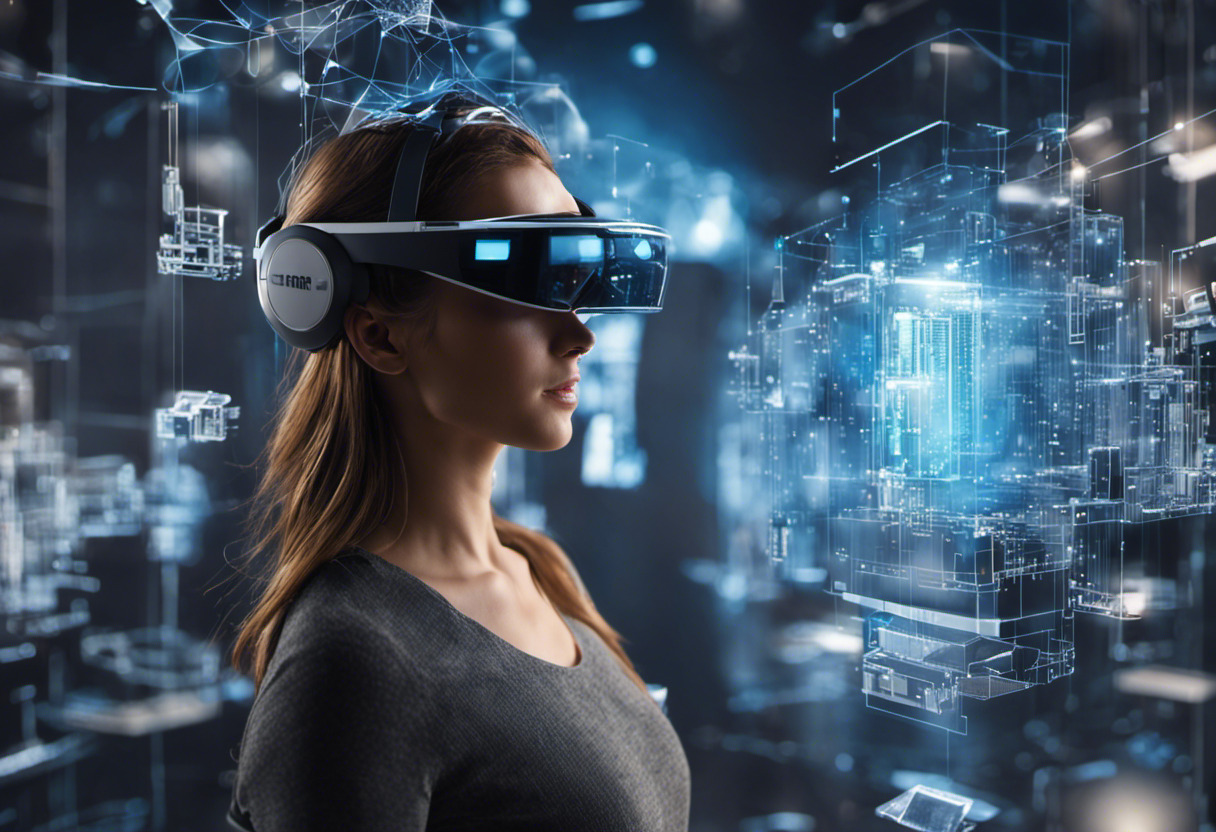
One practical approach is to employ color psychology where various colors can be used to evoke specific moods or feelings. For instance, a warm color palette might convey positivity and enthusiasm, whereas a cool color palette can suggest tranquility and trust.
Audio Cues in AR
Audio cues, on the other hand, act as environmental enhancers or triggers for user reactions. The strategic use of sounds – ranging from music, ambient noises to sound effects – can considerably influence the overall impact of the story by altering perception and enhancing immersion.
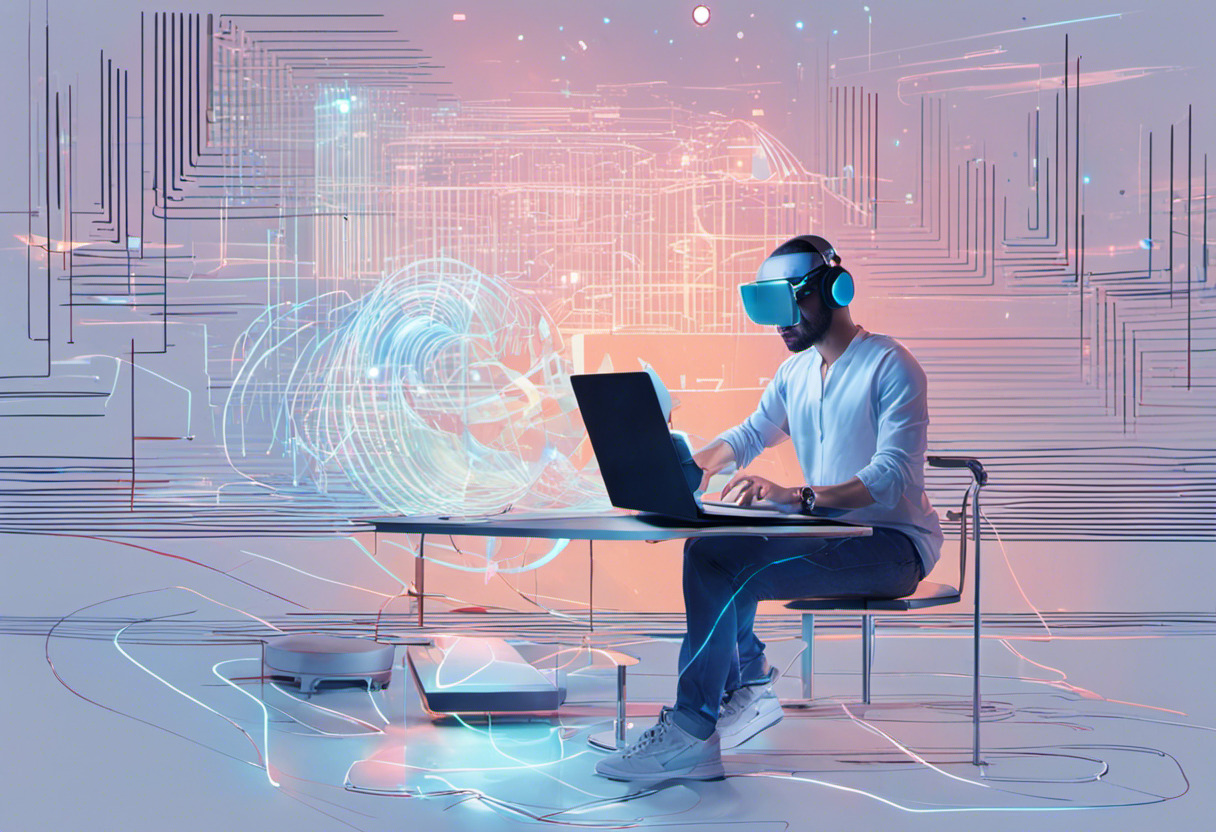
Consider creating an interactive sound design by employing audio cues that react to user’s actions or changing background music based on the story’s progress. The result is an increased sense of presence, making the narrative more visceral and engaging.
Visual and Audio Cues: Contributing to Mood, Atmosphere, Realism, and Immersion
Visual and audio cues are essentially the backbone of shaping the mood, atmosphere, realism, and immersion of the narrative. They serve as the complementary elements that bring a story to life.
| Mood | Atmosphere | Realism | Immersion |
|---|---|---|---|
| Established by color palettes and music choice | Dictated by environmental details and ambient sounds | Achieved by photo-realistic visuals and accurate sounds | Enhanced by responsive design and sounds that react to user’s actions |
User actions can be guided through visual prompts or sound notifications, making the interface more intuitive. For instance, a blinking item may indicate interactability, and a specific sound might signal a character’s appearance. As a result, users will be more likely to fully engage in the narrative.
Maximizing the capability of these cues in creating a meaningful AR storytelling experience is crucial. As per our guide on creating effective and responsive web AR interfaces, being able to guide the users while retaining their attention is key.
- Multidimensional storytelling: Complementing visuals with audio offers a multi-sensory experience, making the narrative richer and more immersive.
- Creating emotional connectivity: Accurate and well-placed visual and audio cues are instrumental in developing an emotional connectivity with the users.
- User retention and engagement: Using cues to guide the user journey makes the story easy to follow, enhancing the user’s attention span and overall engagement.
By intelligently leveraging visual and audio cues in AR, developers and content creators can truly shape unique and resonant narratives, birthing a new era of storytelling.
Promoting User Participation and Interaction in AR Stories
As we delve into the realm of web-based augmented reality, user engagement plays a definitive role in creating richer, more immersive storytelling experiences. The dynamic aspect of AR, which enables real-time interaction, considerably magnifies user engagement.
Our primary focus is understanding and implementing techniques that promote user participation and make storytelling more personal and exciting. Encouraging user participation and interaction in AR content results in remarkably enhanced user involvement, curiosity, and satisfaction.
Encouraging Active Engagement through Gestures
One of the leading techniques is to employ user gestures to interact with the AR elements within the story, offering a more intuitive and natural method of participation. Imagine letting your users manipulate virtual objects with gestures as simple as pinching, swiping, or rotating, thus enlivening their involvement in the story.
A finer application of gestures could translate into more complex interactions, such as casting a spell or playing a virtual musical instrument. This degree of interactivity brings AR experiences closer to reality.

Voice Commands: Adding Uniqueness to Interaction
AR content can incorporate voice commands as part of the user interaction. This further personalizes the user’s experience, allowing them to control and navigate the story with their voice, creating a sense of command and involvement in their journey.
Touch Inputs: Closing the Gap between Virtual and Reality
By using touch inputs, users can navigate, select and manipulate objects in the AR story, simulating a palpable connection with the virtual elements. This simulation fosters an emotional bond between the user and the narrative.
Promoting Interaction: A Summary of Techniques
| Technique | Application in AR Story | User Experience |
|---|---|---|
| Gestures | Rotating, pinching, swiping virtual objects. | Intuitive and natural interaction. |
| Voice Commands | Control and navigate the story. | Increased command and involvement. |
| Touch Inputs | Select and manipulate virtual objects. | Palpable connection with AR elements. |
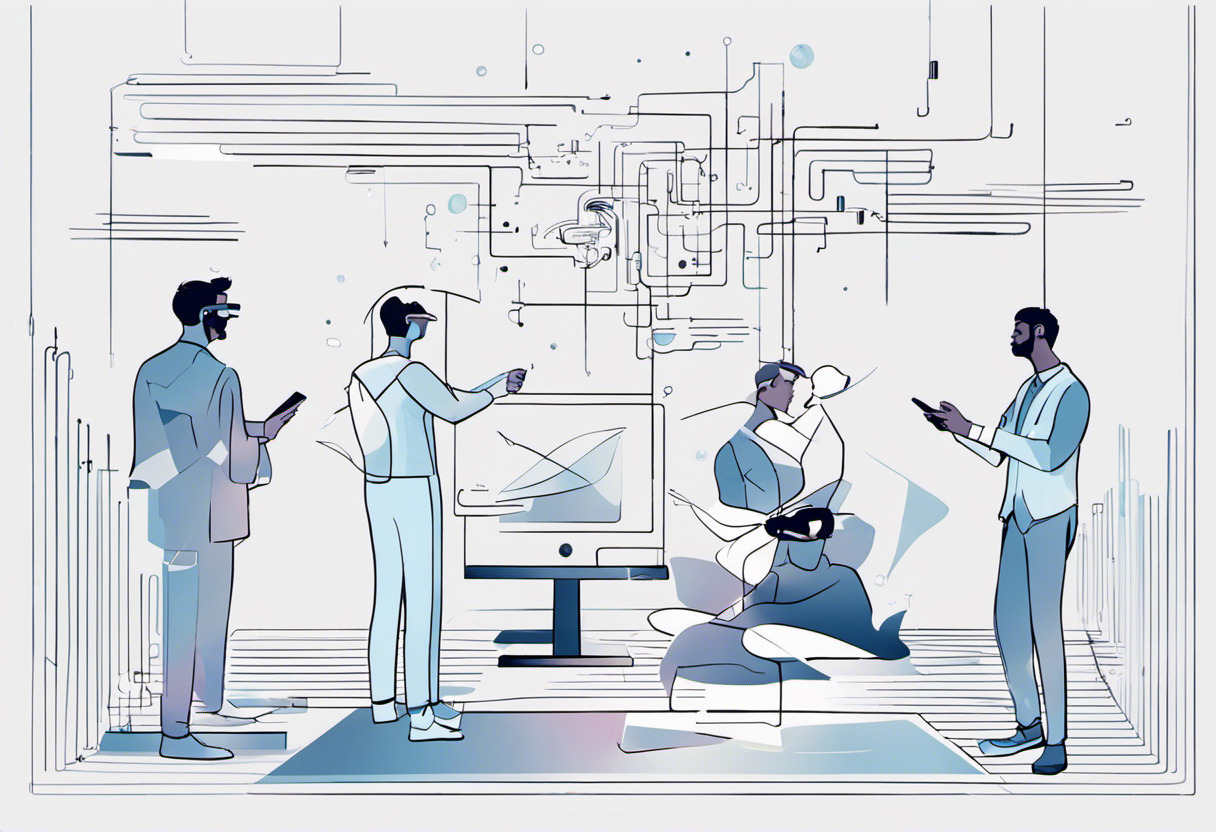
Paving the Way for Dynamic AR Storytelling
In the dynamic world of AR storytelling, these participatory tactics can exceptionally enhance user engagement, immersion, and curiosity. They alter the user’s role from a passive audience to an active participant in the story, breaking barriers and driving immersion within the narrative.
However, promoting user participation and interaction is an ongoing process of experimentation and refinement. For greater insights and guidance on performance techniques which prove instrumental in optimizing user interactions in AR content, here’s an informative source that dives into the nuts and bolts of AR performance mechanisms for successful, interactive AR storytelling.
Practicing and Refining AR Content for Optimal Storytelling
Web-based Augmented Reality (AR) narratives require continuous practicing and refining to ensure optimal performance and an extraordinary immersive experience. We will unravel the process involved in enhancing your AR content, taking into account its usability, accessibility, quality, emotional impact, appeal, and value.
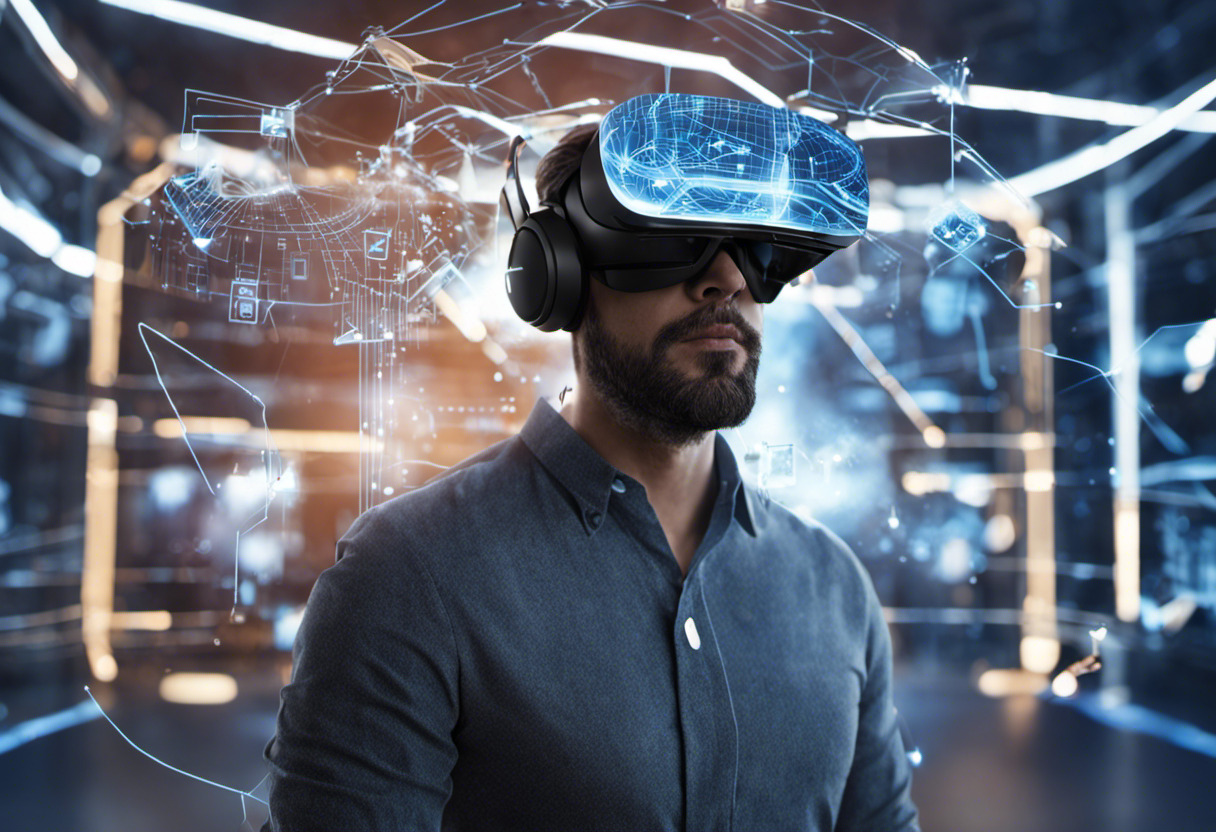
The Art of Iteration: Importance of Periodic Testing
Testing AR content presents an opportunity to refine narratives, respond to user feedback, and keep your AR storytelling at the forefront of technology. It helps identify loopholes, technical errors, and usage problems, enabling you to improve the overall user experience while ensuring your story is engaging and compelling.
Yet, testing is no one-time activity. It is a repeated process that ought to be integrated into the production timeline for AR narratives, maintaining consistency in the immersive experience provided to the users.
The Toolbox: Methods and Tools for Testing AR Content
There are various methodologies and tools available that aid in the process of testing and refining your AR content. They range from simple user interface testing to intricate AR-specific tools meant to evaluate the entire AR experience.
- User Interface Testing: This involves examining the interactive elements of the AR story.
- Usability Testing: Here the user ease and efficiency of interaction with the AR content is measured.
- Immersive Testing: This examines the level of immersion and presence your AR story provides to the users.
- Emotion Tracking: A measure of the emotional impact your AR story has on your users can be gauged through tools that measure facial expressions and biometrics.
Fine-Tuning AR stories for Success
Refining AR content is as important as creating it. The process includes enhancing visual elements, optimizing user interfaces, and adjusting narratives to provide a seamless and immersive storytelling experience.
Notably, it’s worth mentioning the significance of maintaining an emotional connection with the audience. Ensuring your AR experience resonates with your users emotionally, coupled with the technical robustness of your AR application, can result in creating an enchanting and unforgettable AR storytelling experience.
To delve deeper into the impact of analytics and tracking in refining your WebAR experiences, this comprehensive guide provides an in-depth view of the importance of user behavior analysis and its role in the consistent improvement of AR narratives.
| AR Content Quality | AR Content Appeal | AR Content Value |
|---|---|---|
| Maximum engagement | Excellent visual elements | High user retention rate |
| Flawless technical function | Emotive storytelling | Increased brand interactions |
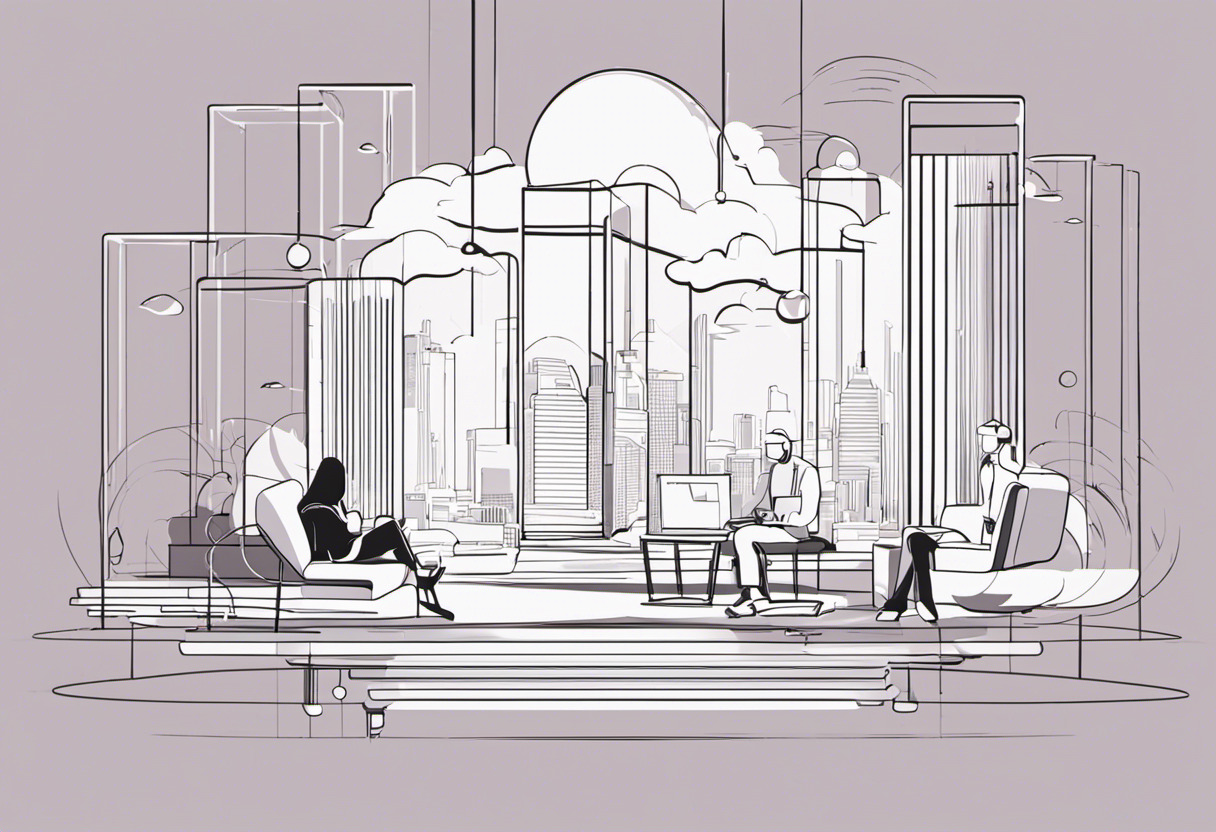
Refining your AR content is a journey, but one that’s worthwhile. The process might be painstaking, but the outcomes in terms of enchanting storytelling, captivated audience, and eventual brand success, make it a worthy investment of time and resources.
Logan Bellbrook
Content writer @ Aircada with a knack for nature & AR/VR/XR. Blogging the intersection of tech & terrain.





